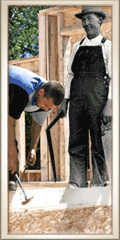|
|||
|
Now Over 25,000 Categorized Links! Family Census Data Directory |
|
|||
|
Now Over 25,000 Categorized Links! Family Census Data Directory |
|
|

|
1820 CensusGo to available databases for 1820The 1820 census was begun on 7 August 1820. The count was due within six months but was extended by law to allow completion within thirteen months. Questions Asked in the 1820 Census Name of family head; number of free white males and females in age categories 0 to 10, 10 to 16, 16 to 18, 16 to 26, 26 to 45, 45 and older; number of other free persons except Indians not taxed; number of slaves; and town or district and county of residence. Additionally, the 1820 census for the first time asked the number of free white males 16 to 18; number of persons not naturalized; number engaged in agriculture, commercial, or manufacture; number of “colored” persons (sometimes in age categories); and number of other persons except Indians. Research Tips for the 1820 Census The 1820 census records are useful in identifying the locality to be searched for other types of records for a named individual. The 1820 census will, in most cases, help distinguish the target family from others of the same name; help to determine family size; locate possible relatives with the same name; identify immediate neighbors who may be related; identify slaveholders; and spot spelling variations of surnames. Free men “of color” are listed as heads of household by name. Slaves appear in age groupings by name of owner. By combining those age groupings with probate inventories and tax list date, it is sometimes possible to determine names of other family members and the birth order of those individuals. The added questions in the 1820 census break down ages so that it is possible to gauge the age of young men more accurately. However, the redundancy of asking the number of free white males “Between 16 and 18,” and “Of 16 and under 26,” “Of 26 and under 45,” “Of 45 and upwards,” is frequently cause for confusion in attempts to calculate the total number of persons in a given household. The column regarding naturalization status may be some indication of length of residency in the United States and the possibility of finding naturalization papers in a local court. The questions asked regarding number and nature of those involved in agriculture, commercial, or manufacturing enterprises allow researchers to make some distinctions about the occupation of the head and any others in the household who were employed. Some, though admittedly not much, identifying information is available where schedules go beyond stating the number of “colored” persons and provide an age breakdown as well. The 1820 manufacturing schedules are on twenty-nine separate rolls of microfilm. Go to available databases for 1820
|
|